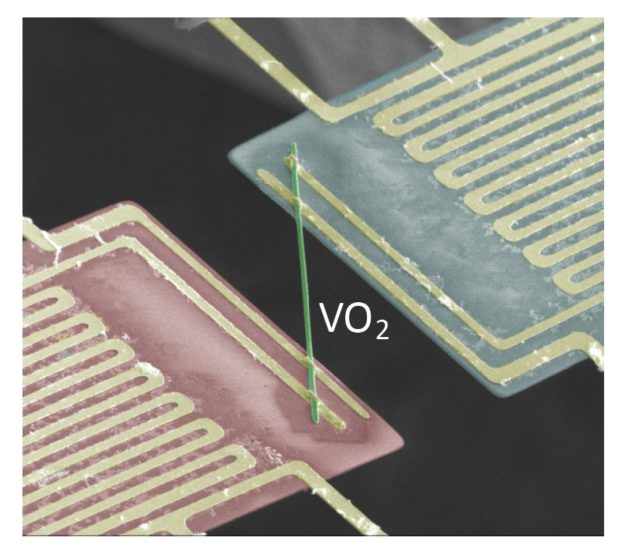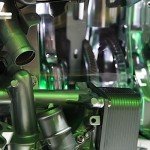A team of researchers led by the Lawrence Berkeley National Laboratory recently discovered a metal that conducts electricity without producing or requiring excess heat. While it would not be a far-fetched notion in conductors operating at cryogenic temperatures, it is an unusual property for one that operates at a temperature of approximately 67 degrees Celsius.
The metal vanadium dioxide (VO2) accomplished just that. Researchers discovered that passing an electrical current through nanoscale rods of VO2 resulted in ten times less heat than the Wiedemann-Franz Law would predict. “This was a totally unexpected finding,” said Berkeley physicist and professor Junqiao Wu. “It shows a drastic breakdown of a textbook law that has been known to be robust for conventional conductors. This discovery is of fundamental importance for understanding the basic electronic behavior of novel conductors.”
At the nanoscale level, heat is carried primarily by vibrations in the crystal lattice. At ordinary temperatures, waves of phonons travel through metals and interfere with electrons’ ability to freely pass through the structure. At ultra-low temperatures, however, atoms are nearly frozen into immobility, which results in the free flow of electrons with almost no rise in temperature. For this reason, most metals become superconductors at cryogenic levels.

Vanadium dioxide, however, undergoes an abrupt transition at 67 degrees Celsius, transforming its crystal structure and changing from an insulator to a conductor. With a remarkably low thermal energy release, electrons in VO2 flow freely to produce a current without limited movement. Researchers theorize that this is because VO2 in its transition phase is a “non-Fermi liquid.”
According to the Fermi Liquid Theory, low temperatures cause electrons in most metals to collect other electrons on the path through the material, accumulating a mass as quasiparticles. These quasiparticles are subject to high dissipation rates at room temperature. Non-Fermi liquids, however, behave differently. Rather than producing quasiparticles for the transport of heat, these materials generate current as electron diffusion moves like liquid from areas of high-electron density regions to low-density regions.
Professor Wu discussed this further in relation to VO2, stating, “The electrons were moving in unison with each other, much like a fluid, instead of as individual particles like in normal metals. For electrons, heat is a random motion. Normal metals transport heat efficiently because there are so many different possible microscopic configurations that the individual electrons can jump between. In contrast, the coordinated, marching-band-like motion of electrons in vanadium dioxide is detrimental to heat transfer as there are fewer configurations available for the electrons to hop randomly between.”

The metallic vanadium dioxide was also discovered to have its electricity-to-heat ratios altered by producing an alloy with other metals. Combining a single crystal of VO2 with tungsten resulted in improved electron flow and a decreased temperature at which the transition into a conductor occurred.
Co-lead author Fan Yang, a postdoctoral researcher at Berkeley Lab’s Molecular Foundry, stated, “This material could be used to help stabilize temperature. By tuning its thermal conductivity, the material can efficiently and automatically dissipate heat in the hot summer because it will have high thermal conductivity but prevent heat loss in the cold winter because of its low thermal conductivity at lower temperatures.”
Yang added that more questions need to be answered before the metal can be commercialized, though the study highlights the potential for “exotic electrical and thermal properties.” Researchers will continue experimenting with and studying the metal, while also debating whether it qualifies as a non-Fermi liquid at its transition point.


































